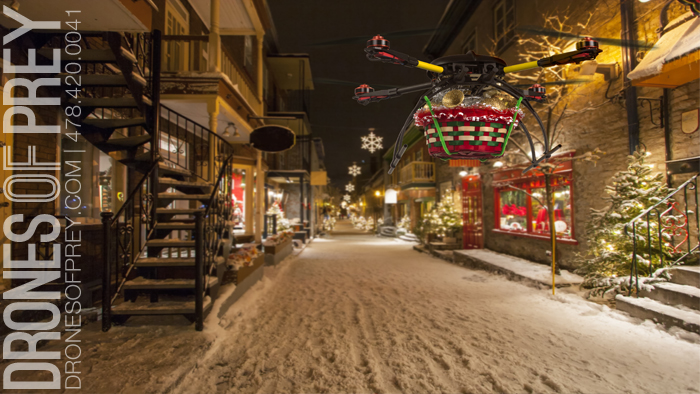We at DOP know that there’s a lot of drones wrapped up under the Christmas tree. We want your experience to be as good as possible! Here we will outline some good practices and suggestions for the beginner pilot with our Christmas Drone Tips.
Start small and do your research. Stick with known brands such as Inductrix or Hubsan. When you choose an off brand, parts support will be an issue. If you’re flying for fun you’re going to crash. You want to be able to get spare parts easily. Parts for these brands are found quickly with a Google search or on Amazon.
Get a drone that you’re comfortable flying indoors. Flying indoors when you’re learning takes out variables that you deal with outside. These include wind, unfavorable temperatures and gives you boundaries to focus on. Plus you can still fly indoors if it’s raining or snowing.
Always turn on your controller or transmitter first before the drone. Think of your controller as the drone’s brain. If you turn on the drone first it’s like a brainless robot. You want your drone to be able to think as soon as it powers up.
Set your drone in the center of the room. When learning to hover you will inevitably end up near obstacles such as furniture or walls. Don’t try to fly away from these objects once you’re right up against them. This rarely works and if your motors are throttled up but not able to turn due to being obstructed it can burn them up. Always return your drone to the center of the room and start over.
If you feel a crash is pending always reduce your throttle before impact to no throttle. If you’re flying indoors over carpet or once you move outdoors this will save your motors. Also, with the low mass of these small micro drones damage is typically none if over carpet or grass.
Identify the nose and tail of your drone. Stand approximately 5 ft BEHIND your drone with the tail pointing towards you. This way your drone will respond as you were in the cockpit of your drone. Meaning a right aileron (aileron is on the right controller stick and slides the drone left and right) input will result in a right roll. Left aileron input will result in a left roll. Forward elevator (elevator is on the right controller stick and moves the drone forward or backwards) input will result in forward flight away from you and back elevator will result in the drone moving back towards you. If you notice your tail is not towards you then use your rudder to bring it back.
Once you are able to maintain a precise hover you should start moving the drone around you in a circle with you in the middle. You will maintain a tail in orientation while the aircraft is moving around you. This teaches you to incorporate aileron inputs and rudder inputs. The aeliron inputs keeps it moving around you in a circle and rudder keeps the tail towards you.
Next do the same circles but left side towards you in the center with drone flying forward. Then do the same with the right side. This teaches you how to use forward elevator and reinforces proper use of the rudder. Plus it gets you comfortable with seeing both left and right side of your drone in flight.
Lastly, the hardest orientation to learn with is hovering with the nose towards you. Now, I learned this using a rc helicopter. I was taught to push the aileron stick towards the lower side of the blade disk. Same applies to drones. Needless to say your inputs will be reversed when your nose in. If your left side of your drone is low push your aeliron stick that direction to correct this. If the right side is low push your aeliron stick right and it will pick up that side.
After you’ve mastered these precision moves you’re ready for full forward flight, not circles around yourself. Start slow and remember that the drone is under your control. Deep breath and own your flights! Don’t let the drone control you, control the drone.

